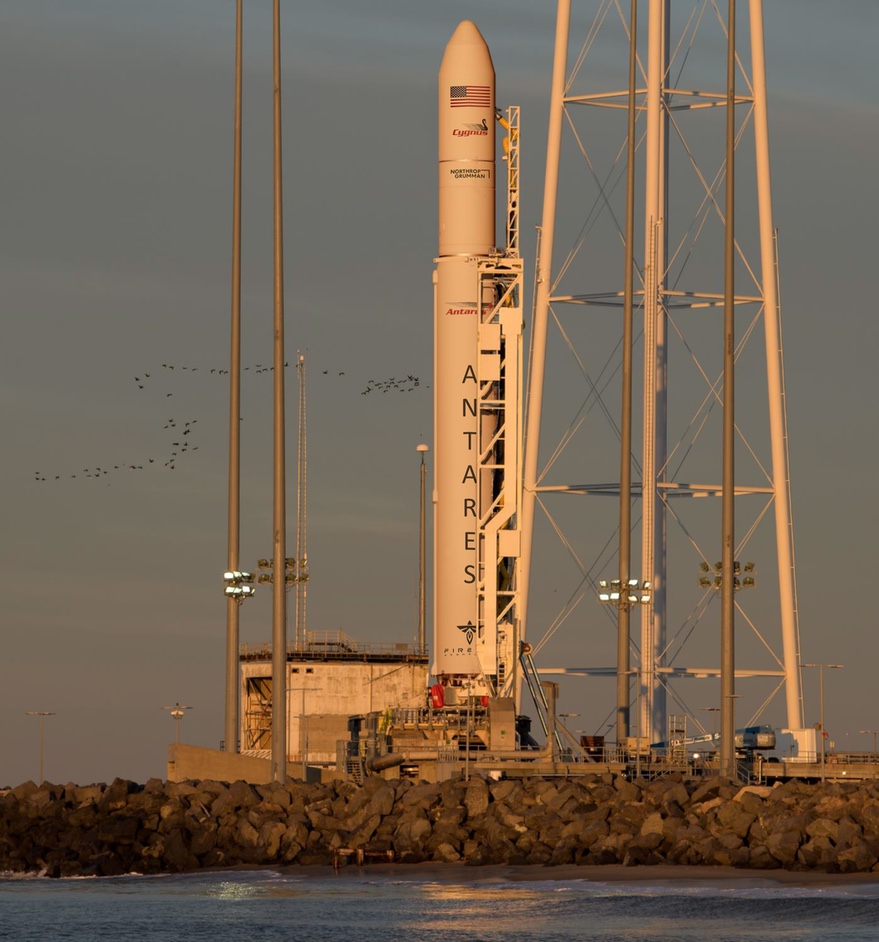Updated 11:45 p.m. with Northrop Grumman comments.
LOGAN, Utah — Northrop Grumman and Firefly Aerospace announced Aug. 8 that they will work together to develop a new first stage for Northrop’s Antares launch vehicle as well as a future medium-lift rocket.
The new version of the Antares, called the Antares 330, will feature a first stage using seven Miranda engines under development by Firefly. The stage will also use Firefly composites for its structure and tanks.
The Antares 330 upper stage will be similar to what Northrop is currently using on the Antares, with the company’s Castor 30XL solid-fuel motor and existing avionics and structures. The vehicle is designed to launch from the current pad at Virginia’s Mid-Atlantic Regional Spaceport that has hosted all previous Antares launches.
“Through our collaboration, we will first develop a fully domestic version of our Antares rocket, the Antares 330, for Cygnus space station commercial resupply services,” Scott Lehr, vice president and general manager of launch missile defense systems at Northrop, said in a statement.
The partnership would solve Northrop’s current reliance on Ukrainian and Russian suppliers for the Antares first stage that put the future of the vehicle, used for launching Cygnus cargo missions to the International Space Station, in doubt. Ukraine’s Yuzhnoye State Design Office and Yuzhmash Machine Building plant produces the Antares first stage, which is powered by RD-181 engines from Russia’s NPO Energomash.

The supply of both the engines and the first stage has been in doubt since Russia’s invasion of Ukraine in February. Northrop officials noted they have completed first stages for two more Antares launches, the first of which is scheduled for October, and that the company was working on options should either the stage or the engines become unavailable. Those executives, though, had declined to go into details about those backup plans before the Firefly partnership announcement.
The two companies provided few other details about their partnership, including financial aspects. Kurt Eberly, director of space launch programs at Northrop Grumman, told SpaceNews that the company expects the Antares 330 to be ready as soon as 2024. To cover the gap between the last launch of the current Antares and the new version, Northrop is buying three SpaceX Falcon 9 launches for its Cygnus spacecraft.
The companies said the Antares 330 will “significantly increase” the vehicle’s payload capacity compared to the existing Antares. Eberly said the Antares 330 will be able to place up to 10,500 kilograms into the insertion orbit sued for ISS missions, compared to 8,100 kilograms for the current Antares. He said that performance would translate into an additional 1,250 kilograms of cargo that Cygnus could deliver to the ISS, to 5,000 kilograms.
The companies also said the partnership would lead to the development of a separate “entirely new” medium-lift launch vehicle, details of which the companies did not disclose. Firefly is working on its own medium-lift vehicle, called Beta, whose first stage will also incorporate the Miranda engine. That engine, which uses liquid oxygen and kerosene propellants, is designed to produce about 230,000 pounds-force of thrust. Eberly said that new vehicle is projected to make its first launch as soon as 2025.
“Firefly prides itself on being a disrupter in the new space industry and collaborating with a proven space pioneer like Northrop Grumman will help us continue that disruption,” said Peter Schumacher, interim chief executive of Firefly, in the statement.
Related
ncG1vNJzZmiroJawprrEsKpnm5%2BifK%2B70a2fq6egYrSzwcymmKdlkaOxbrLIq5yfpKliwbB5z5qpraaVp3qwuoyup6CqkZmypXnAp6uaqpWofA%3D%3D